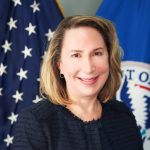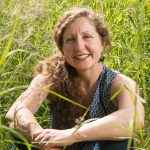Tongass transition: Future of the forest depends on preserving old growth
Young growth timber harvest can sustain timber industry, environmentalist says — others aren’t so sure
By Peter Segall, Originally published December 22, 2019 at the Juneau Empire
A recently released mapping project seeks to show the importance of the Tongass National Forest not necessarily in terms of fishing, tourism or dollars but in carbon.
The Oregon-based Geos Institute published an analysis of the Tongass on Dec. 16, and it highlights the importance of the National Forest as a “carbon sink,” which the report says has global climate implications.
“The Tongass is part of a global network of temperate rainforests that make up ~2.5% of the world’s total forest coverage,” the report says. “But these rainforests have exceptional carbon stores for their relatively small spatial extent and are critically important in climate regulation collectively and individually.”
Using data sets from the U.S. Forest Service’s Forest Inventory and Analysis program and Pacific Northwest Research Station, Dominic DellaSala, chief scientist at the Geos Institute and Brian Buma at the University of Colorado, Denver created an analysis of the carbon density of the Tongass.
“When you do a hike in an old-growth forest,” DellaSala said in an interview with the Empire, “you’re looking at a big carbon stick.”
Trees naturally absorb carbon from the atmosphere and convert it to oxygen as part of their natural life cycle, DellaSala said. Excess carbon is stored in the roots and soils of old-growth forests.
“Just like Amazonia is the lungs of the planet,” DellaSala said, “the Tongass is the lungs of North America.”
When asked for comment on this story, Forest Service regional spokesperson Dru Fenster told the Empire in an email the appropriate staff members were not available to give sufficient response because of holiday leave.
Preserving the Tongass, he said, is essential as a deterrent against climate change, or what DellaSala called, “climate catastrophe.”
But the Tongass as a bulwark is currently under threat by the Trump Administration’s plans to rollback the Roadless Rule on the Tongass, according to DellaSala.
The U.S. Department of Agriculture, which oversees the Forest Service, is currently considering six alternatives to the Roadless Rule that currently applies to 9.2 million acres of the Tongass. The rule prohibits the harvest of timber and the construction or reconstruction of roads in certain areas.
Opponents of the rule say it places undue burdens on industries in the region, not just timber, and makes it difficult for local communities to exploit their natural resources. That doesn’t necessarily mean things like mining, though that is an industry that would benefit from lifting the roadless rule.

Critics have also complained the rule limits infrastructure projects, particularly for renewable energy sources such as hydroelectric and geothermal power.
But the timber industry does factor in to considerations about the roadless rule. Sen. Lisa Murkowski, R-Alaska, has expressed her support for seeing the timber industry grow in Southeast Alaska as has Gov. Mike Dunleavy.
On Dec. 16, Dunleavy spoke to conservative think tank the Heritage Foundation in Washington, D.C. and during the question-and-answer session told the crowd the timber industry had once provided a large number of well-paying jobs.
But there was a way for the timber industry and the roadless rule to coexist according to DellaSala. Trees absorb and store carbon throughout their lifetime, and when those trees are cut down they release that carbon into the atmosphere. The older the tree the more carbon is released DellaSala said.
If the timber industry were to transition to “young growth” trees, or trees that are roughly 70 years or younger, timber could be harvested with less impact to the environment.
“They’re planning to log 43,000 acres,” DellaSala said, referencing the land that would be available for timber harvest if the rule were lifted. “The emissions from that kind of logging would be equivalent to 4 million vehicles on Alaska’s highways.”
In the next few years trees that were planted after clear cut logging that took place in Alaska in the 1950s and ‘60s will be old enough to harvest, DellaSala said.
“We’ve been really championing the transition strategy,” he said. “You can have (timber) jobs in a way that is going to be sustainable.”
That is potentially possible, but not necessarily financially viable according to Owen Graham, executive director of the Alaska Forest Association, a timber industry group.
“Because they’re making lumber out of these lower grade trees, they have these highly mechanized mills,” Graham said. “You can physically do it but you won’t make enough money.”
The equipment needed to harvest young-growth trees was very expensive, Graham said. With the amount of land the Forest Services currently allows to be harvested, there just isn’t enough volume to make a profit.
Furthermore, Graham said, the market for small diameter logs is different that the one for larger trees. There aren’t currently facilities that can manufacture smaller trees into a sell-able product in Southeast Alaska, Graham said.
“You’d have to be exporting small diameter logs to China or other regions that have that infrastructure,” he said. “Then you lose those year-round manufacturing jobs.”
But DellaSala thinks the transition should be considered more in the face of climate change.
“With climate consequences we need to get the transition back on the rails,” DellaSala said. “The Tongass is one of a kind and the future of Alaska depends on what happens in the Tongass.”
Join the Cornerstone Network
Sign up with a monthly donation and become part of our Cornerstone Network. Network members recieve the messages posted here first, delivered directly to your inbox. Your ongoing support is the foundation of our work.

 Samantha Medlock is President of Climate Risk Advisors, helping communities and organizations advance equity, sustainability, and resilience. Her career began chasing floods as a local official in Texas Flash Flood Alley—a hands-on experience that still shapes her approach to climate and disaster risk management.
Samantha Medlock is President of Climate Risk Advisors, helping communities and organizations advance equity, sustainability, and resilience. Her career began chasing floods as a local official in Texas Flash Flood Alley—a hands-on experience that still shapes her approach to climate and disaster risk management.
 Arsum is the Senior Adaptation and Coastal Resilience Specialist for the National Wildlife Federation’s Southcentral Region. In this role, she advances climate adaptation efforts, with a focus on nature-based approaches to address the impacts of climate change and extreme events across the Gulf region. She has authored and co-authored numerous publications on climate impact assessments and adaptation solutions. Additionally, she regularly participates in state-based coastal resilience and hazard mitigation planning across the Gulf, collaborating with regional and local stakeholders.
Arsum is the Senior Adaptation and Coastal Resilience Specialist for the National Wildlife Federation’s Southcentral Region. In this role, she advances climate adaptation efforts, with a focus on nature-based approaches to address the impacts of climate change and extreme events across the Gulf region. She has authored and co-authored numerous publications on climate impact assessments and adaptation solutions. Additionally, she regularly participates in state-based coastal resilience and hazard mitigation planning across the Gulf, collaborating with regional and local stakeholders. Frank is the former President of the Reinsurance Association of America. Frank currently serves on the Advisory Board of the OECD’s International Network for the Financial Management of Large-Scale Disasters, the RAND Center on Catastrophic Risk Management and Compensation, and the University of Cincinnati’s Carl H. Lindner III Center for Insurance and Risk Management Advisory Board.
Frank is the former President of the Reinsurance Association of America. Frank currently serves on the Advisory Board of the OECD’s International Network for the Financial Management of Large-Scale Disasters, the RAND Center on Catastrophic Risk Management and Compensation, and the University of Cincinnati’s Carl H. Lindner III Center for Insurance and Risk Management Advisory Board. Jim is a multilingual world traveler. Based in Bavaria during the 1970s, Jim spent most of this period in India, Afghanistan and Nepal, where he founded and operated a charitable medical clinic serving Tibetan Refugees. He settled in Oregon in 1983 on a forested ranch in the Umpqua National Forest.
Jim is a multilingual world traveler. Based in Bavaria during the 1970s, Jim spent most of this period in India, Afghanistan and Nepal, where he founded and operated a charitable medical clinic serving Tibetan Refugees. He settled in Oregon in 1983 on a forested ranch in the Umpqua National Forest. Dr. Micah Hahn is an Associate Professor of Environmental Health in the Institute for Circumpolar Health Studies at the University of Alaska-Anchorage. She received her joint PhD in Epidemiology / Environment and Resources from the University of Wisconsin-Madison and her MPH in Global Environmental Health from Emory University. Subsequently, she was a postdoctoral fellow for the CDC Climate and Health Program, and in this position worked collaboratively with the CDC Division of Vector-borne Diseases and the National Center for Atmospheric Research. Her research focuses on understanding the health impacts of climate change and working with communities to develop locally-relevant adaptation and resilience-building strategies. Dr. Hahn is also on the Management Team of the Alaska Climate Adaptation Science Center.
Dr. Micah Hahn is an Associate Professor of Environmental Health in the Institute for Circumpolar Health Studies at the University of Alaska-Anchorage. She received her joint PhD in Epidemiology / Environment and Resources from the University of Wisconsin-Madison and her MPH in Global Environmental Health from Emory University. Subsequently, she was a postdoctoral fellow for the CDC Climate and Health Program, and in this position worked collaboratively with the CDC Division of Vector-borne Diseases and the National Center for Atmospheric Research. Her research focuses on understanding the health impacts of climate change and working with communities to develop locally-relevant adaptation and resilience-building strategies. Dr. Hahn is also on the Management Team of the Alaska Climate Adaptation Science Center. Michael is a former Founding Principal of Resilient Cities Catalyst, a global non-profit helping cities and their partners tackle their toughest challenges. He is currently the Executive Director of Climate Resilience Academy at the University of Miami.
Michael is a former Founding Principal of Resilient Cities Catalyst, a global non-profit helping cities and their partners tackle their toughest challenges. He is currently the Executive Director of Climate Resilience Academy at the University of Miami. Dr. Quintus Jett is a consultant, educator, and strategist for public causes. He has a doctorate in Organizations & Management from Stanford University, and a two-decade faculty career which spans schools, departments, and programs of business, engineering, liberal studies, divinity, and public and nonprofit management. Following Hurricane Katrina in 2005, Dr. Jett launched a volunteer project in New Orleans, which enlisted residents, students from over a dozen colleges and universities, and hundreds of others to field map the city’s Gentilly district, Lower Ninth Ward, and New Orleans East. Dr. Jett is an innovator in higher education, bridging the divide between academic research and the other priorities of the modern university, including student access and diversity, community engagement, and providing foundations for life-long learning in today’s rapidly changing world.
Dr. Quintus Jett is a consultant, educator, and strategist for public causes. He has a doctorate in Organizations & Management from Stanford University, and a two-decade faculty career which spans schools, departments, and programs of business, engineering, liberal studies, divinity, and public and nonprofit management. Following Hurricane Katrina in 2005, Dr. Jett launched a volunteer project in New Orleans, which enlisted residents, students from over a dozen colleges and universities, and hundreds of others to field map the city’s Gentilly district, Lower Ninth Ward, and New Orleans East. Dr. Jett is an innovator in higher education, bridging the divide between academic research and the other priorities of the modern university, including student access and diversity, community engagement, and providing foundations for life-long learning in today’s rapidly changing world. Scott is Monfort Professor of Atmospheric Science at Colorado State University. He has written about 100 publications in the peer-reviewed climate literature, is a former editor of the Journal of Climate, and served for five years as founding Science Chair of the North American Carbon Program.
Scott is Monfort Professor of Atmospheric Science at Colorado State University. He has written about 100 publications in the peer-reviewed climate literature, is a former editor of the Journal of Climate, and served for five years as founding Science Chair of the North American Carbon Program. Linda has many years of experience in disaster preparedness and resilience. She has been an elected official on the Linn County Iowa Board of Supervisors, Chair of the Metropolitan Planning Organization, the East Central Iowa Council of Governments, the statewide Mental Health Developmental Disability and the Linn County Board of Health. Langston is a former president of the National Association of Counties (2013-2014).
Linda has many years of experience in disaster preparedness and resilience. She has been an elected official on the Linn County Iowa Board of Supervisors, Chair of the Metropolitan Planning Organization, the East Central Iowa Council of Governments, the statewide Mental Health Developmental Disability and the Linn County Board of Health. Langston is a former president of the National Association of Counties (2013-2014). Ken works with families and organizations as a mediator, organizational consultant, trainer and facilitator. Along with his passion for helping people prepare for and reduce climate change, Ken also volunteers as a mediator through Mediation Works and is passionate about supporting youth through mentoring with Boys to Men of Southern Oregon.
Ken works with families and organizations as a mediator, organizational consultant, trainer and facilitator. Along with his passion for helping people prepare for and reduce climate change, Ken also volunteers as a mediator through Mediation Works and is passionate about supporting youth through mentoring with Boys to Men of Southern Oregon. Matthew is a retired high school teacher who was once honored as Oregon High School Social Studies Teacher of the Year. Before his teaching career he was in the restaurant business in Portland. He is also a lawyer who has been a member of the Oregon State Bar Association since 1980.
Matthew is a retired high school teacher who was once honored as Oregon High School Social Studies Teacher of the Year. Before his teaching career he was in the restaurant business in Portland. He is also a lawyer who has been a member of the Oregon State Bar Association since 1980. Andrea is the Resilience Policy Advisor for the North Carolina Office of Recovery and Resiliency. She works across state agencies and with local governments to increase the state’s resilience to the impacts of climate change.
Andrea is the Resilience Policy Advisor for the North Carolina Office of Recovery and Resiliency. She works across state agencies and with local governments to increase the state’s resilience to the impacts of climate change.